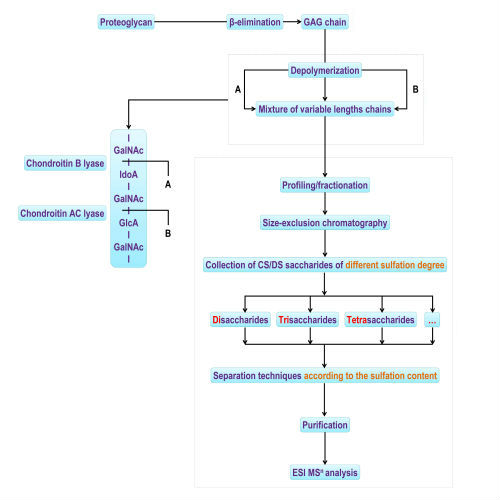
Author information
Adrian Cristian Robu1, Laurentiu Popescu1,2, Alina Diana Zamfir1,3, *
Download
1National Institute for Research and Development in Electrochemistry and Condensed Matter, RO-300224, Timisoara, Romania
2Faculty of Physics, West University of Timisoara, RO-300223, Timisoara, Romania
3Aurel Vlaicu University of Arad, RO-310130, Arad, Romania
2Faculty of Physics, West University of Timisoara, RO-300223, Timisoara, Romania
3Aurel Vlaicu University of Arad, RO-310130, Arad, Romania
Abstract
During the past few years, in the field of glycosaminoglycomics, mass spectrometry (MS) emerged as one of the most efficient analytical techniques due to its valuable contribution to compositional and structural determination of various glycosaminoglycan (GAG) classes. This review highlights briefly some of the most modern and efficient MS approaches and allied separation techniques such as liquid chromatography, ion mobility and capillary electrophoresis designed to offer high performance analysis at elevated sensitivity, with drastic reduction of the sample consumption and processing prior to MS. Such bioanalytical platforms are able to provide valuable and straightforward information on the GAG oligosaccharide domains and their structure in terms of epimerization, composition of the disaccharide repeats and their sulfation status. The state-of-the-art in the field of the MS techniques applied to GAG analyses is focused here particularly on chondroitin and dermatan sulfate GAGs extracted and purified from the extracellular matrix and cerebral tissue.
(Received 20 March, 2017; accepted 25 April, 2017)
Keywords
glycosaminoglycans, electrospray ionization, high resolution mass spectrometry, screening, fragmentation analysis









